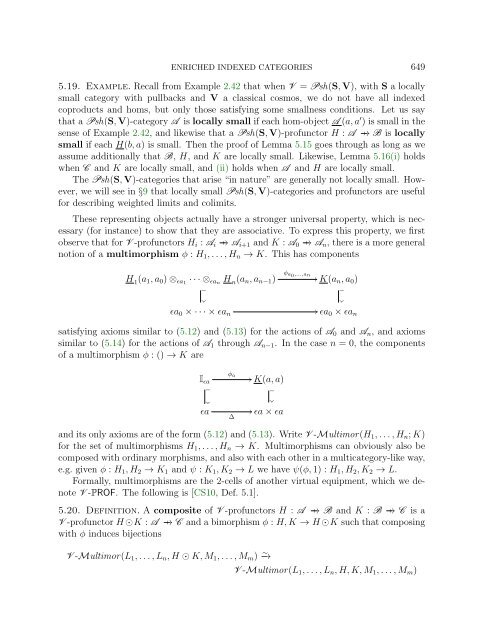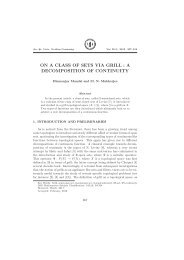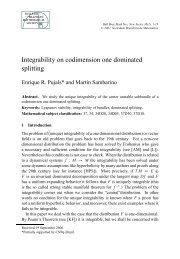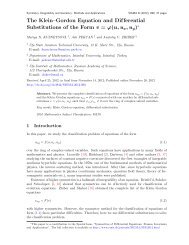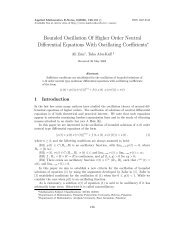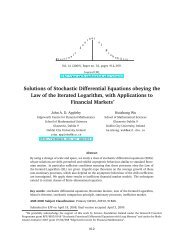ENRICHED INDEXED CATEGORIES Contents 1. Introduction
ENRICHED INDEXED CATEGORIES Contents 1. Introduction
ENRICHED INDEXED CATEGORIES Contents 1. Introduction
Create successful ePaper yourself
Turn your PDF publications into a flip-book with our unique Google optimized e-Paper software.
<strong>ENRICHED</strong> <strong>INDEXED</strong> <strong>CATEGORIES</strong> 6495.19. Example. Recall from Example 2.42 that when V = Psh(S, V), with S a locallysmall category with pullbacks and V a classical cosmos, we do not have all indexedcoproducts and homs, but only those satisfying some smallness conditions. Let us saythat a Psh(S, V)-category A is locally small if each hom-object A (a, a ′ ) is small in thesense of Example 2.42, and likewise that a Psh(S, V)-profunctor H : A −→ −↦ B is locallysmall if each H(b, a) is small. Then the proof of Lemma 5.15 goes through as long as weassume additionally that B, H, and K are locally small. Likewise, Lemma 5.16(i) holdswhen C and K are locally small, and (ii) holds when A and H are locally small.The Psh(S, V)-categories that arise “in nature” are generally not locally small. However,we will see in §9 that locally small Psh(S, V)-categories and profunctors are usefulfor describing weighted limits and colimits.These representing objects actually have a stronger universal property, which is necessary(for instance) to show that they are associative. To express this property, we firstobserve that for V -profunctors H i : A i −→ −↦ A i+1 and K : A 0 −→ −↦ A n , there is a more generalnotion of a multimorphism φ : H 1 , . . . , H n → K. This has componentsH 1 (a 1 , a 0 ) ⊗ ɛa1 · · · ⊗ ɛan H n (a n , a n−1 )❴ɛa 0 × · · · × ɛa nφ a0 ,...,anK(a n , a 0 )❴ ɛa 0 × ɛa nsatisfying axioms similar to (5.12) and (5.13) for the actions of A 0 and A n , and axiomssimilar to (5.14) for the actions of A 1 through A n−1 . In the case n = 0, the componentsof a multimorphism φ : () → K areI ɛaφ a❴ɛa∆K(a, a)❴ ɛa × ɛaand its only axioms are of the form (5.12) and (5.13). Write V -Multimor(H 1 , . . . , H n ; K)for the set of multimorphisms H 1 , . . . , H n → K. Multimorphisms can obviously also becomposed with ordinary morphisms, and also with each other in a multicategory-like way,e.g. given φ : H 1 , H 2 → K 1 and ψ : K 1 , K 2 → L we have ψ(φ, 1) : H 1 , H 2 , K 2 → L.Formally, multimorphisms are the 2-cells of another virtual equipment, which we denoteV -PROF. The following is [CS10, Def. 5.1].5.20. Definition. A composite of V -profunctors H : A −→ −↦ B and K : B −→ −↦ C is aV -profunctor H ⊙K : A −↦−→ C and a bimorphism φ : H, K → H ⊙K such that composingwith φ induces bijectionsV -Multimor(L 1 , . . . , L n , H ⊙ K, M 1 , . . . , M m ) ∼ −→V -Multimor(L 1 , . . . , L n , H, K, M 1 , . . . , M m )


